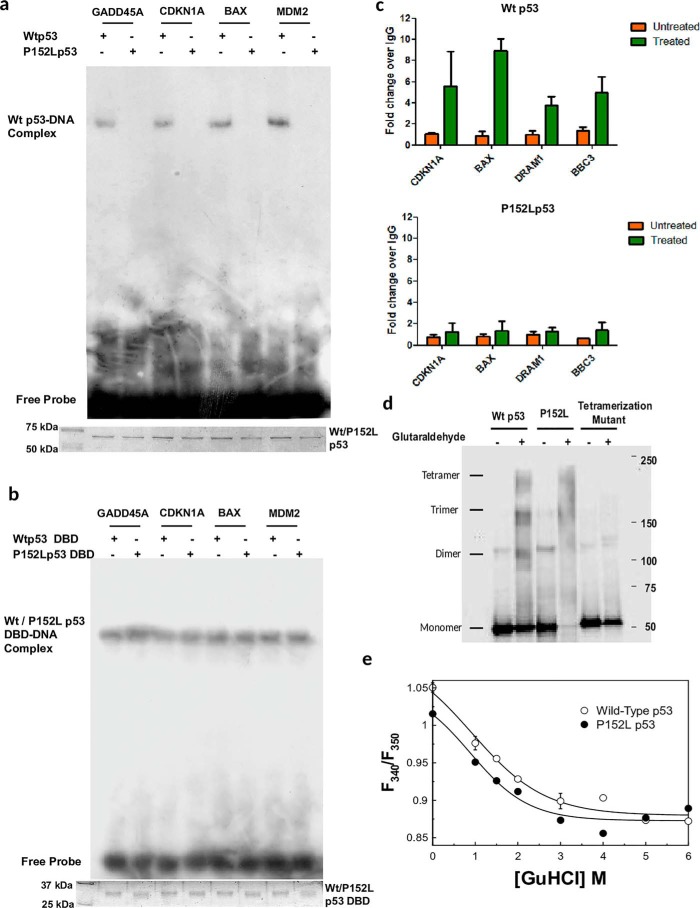Figure 2.
Biochemical characterization of P152Lp53. a, EMSA showing the abrogation of the DNA-binding property of recombinant full-length P152Lp53; b, EMSA showing the DNA binding property of DBD of WT and P152Lp53 (protein loading is shown in Coomassie-stained SDS-PAGE gel image); c, ChIP-qPCR to determine the occupancy of Wtp53 and P152Lp53 at p53 responsive gene promoters. The mean relative fold-change of p53 occupancy over IgG ± S.D. have been plotted (n = 2). d, tetramer formation assay by glutaraldehyde cross-linking resolved in 3–12% gradient SDS-PAGE followed by Western blotting. e, equilibrium GuHCl denaturation of wildtype (○) and P152L (●) p53. The fitted curve is to a two-state equation. Each data point is an average of three independent biological replicates.

